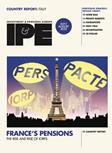Funds struggle to meet their capital requirements
Danish funds suffered more than many from the market meltdown. Much of Denmark’s pension money is based on a 4.5% minimum benefit guarantee, which was the rate for 12 years until 1994. The falls in share prices and interest rates, combined with the high guarantee, have made it difficult for ...
You have now reached your article limit
Already a registered user or member? Sign in here
To continue reading, register free today for access
Registration also includes access to

Five reasons to register today
- Access to IPE articles from our award-winning editorial team
- Unique IPE market data, rankings and tables
- In-depth interviews with pension fund leaders
- Extensive coverage of latest asset class trends
- Comprehensive archive of data, research and intelligence







